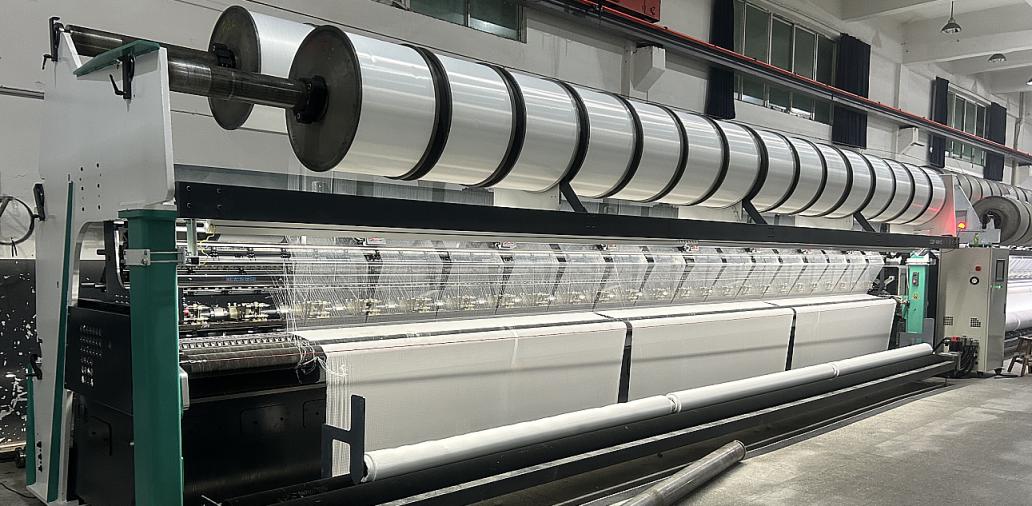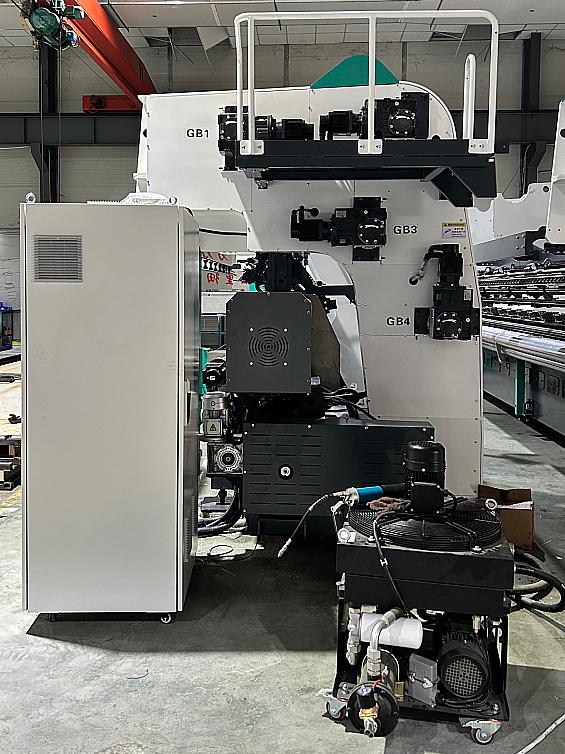How to Pick the Best Tricot Machine for Garment Manufacturers
Choosing the Best Tricot Machine For Garment Manufacturers is not about chasing specs. It’s about matching real fabrics, real orders, and real deadlines. Your buyers want lighter meshes today and plush textures tomorrow. Your team needs fast changeovers and repeatable quality. The wrong choice costs time and margins. The right one turns sampling into steady output. In the next section, we’ll reveal a simple way to map guide bars to fabric goals, plus two signals that predict stable production before you sign the PO. Ready to see what most buyers miss?

Understand Your Application And Fabric Goals
Start with fabric, not hardware. Map your core SKUs and growth bets: lingerie meshes, sportswear linings, elastic tapes, interlock-like surfaces, or technical shells. Each fabric family pushes different requirements for gauge, bar count, yarn types, and finishing. When customers ask for softer drape or crisper recovery, machine choices must reflect that. If your pipeline includes recycled polyamide or bio-based yarns, verify compatibility with yarn paths and tension control, or you’ll fight variability on the floor.
✅ Key Fabric-Driven Choices
- Gauge & Bar Configuration: Align needle gauge and 2- 4 bar options to target patterns; avoid overbuying bars you’ll never thread.
- Yarn Versatility: Confirm stable running for microfiber, elastane-covered, and recycled filaments without excessive downtime.
- Handfeel & Recovery: Check take-down uniformity and knock-over dynamics for the desired drape and rebound.
- Color & Pattern Range: Ensure the guide bar motion and pattern control meet present and near-term design briefs.
✅ Evaluate Core Machine Technologies
Performance is more than nameplate speed. Look at the systems that protect quality, reduce waste, and keep operators confident. At Grand Star Technology, we build around stable, low-vibration frames and precise drive architecture so settings translate into repeatable fabrics.
- Drive & Control: Closed-loop motors and digital pattern drives reduce stitch variance and produce cleaner selvedges.
- Threading & Tension: Optimized yarn paths and electronic let-off keep elastane and microfilaments running without fuzzing.
- Take-Down & Cooling: Uniform fabric take-down prevents barre and helps with post-finish consistency.
- Energy Profile: High-efficiency motors and smart idle modes lower per-meter energy cost without throttling output.
- Usability: Touchscreen recipes, QR-based setup, and guided maintenance shorten changeovers and training curves.
What Modern Apparel Lines Actually Need
Garment programs move fast: a breathable athleisure drop this quarter, a delicate lingerie capsule the next. Your machine should follow, not fight, that rhythm. For us, the starting brief is simple: precision, repeatability, and controlled flexibility.
- Control That Shows Up In The Fabric
We build frames and drives that hold stitch geometry at speed. That means cleaner mesh, tighter edges, and consistent recovery where stretch is required. Our adjustable gauge and density settings help you move from airy structures to close, stable weaves without re-learning the machine every time. When you are quoting on thin margins, this stability reduces scrap and protects first-quality yield.
- Flexibility Without Chaos
Flexibility should not mean chaos on the sewing floor. Grand Star tricot machines are available with 2, 3, or 4 guide bars, and we pair them with integrated electronic control systems developed in-house. The upshot: operators can store and recall proven recipes, technicians can standardize settings across shifts, and R&D teams can trial new stitch maps quickly. That’s how the Best Tricot Machine For Garment Manufacturers behaves – agile when you want it, predictable when you need it.
- Faster changeovers: Go from elastic fabrics to pile constructions with minimal downtime.
- Auditable quality: Precision parts and closed-loop controls sustain stable fabric output on long runs.
- Range of end uses: One platform can support apparel, home, automotive, and technical textiles.
- Dialed density: Fine control over gauge and stitch count serves both breathable meshes and compact surfaces.

Match Guide Bars To Your Fabric Roadmap
Start with your SKU mix, not a spec sheet. Over-spec and you add cost with no payoff; under-spec and you limit patterns, stretch, and hand feel. Here’s a practical way to decide which configuration leads to the Best Tricot Machine For Garment Manufacturers in your context.
- Two Guide Bars: Lean Output For Stable Bases
Choose 2 bars when you value clean construction and steady throughput on lightweight or stable grounds. Common wins include mosquito nets, mattresses and bedding, embroidery grounds and tulle, coating substrates, and advertising media. You get uniform surfaces and predictable tension, which finishing departments appreciate. The economics are straightforward: tighter capex, reliable output, low training burden. If your order book is heavy on base fabrics and laminating substrates, two bars often deliver the best ROI.
- Three Guide Bars: Stretch, Patterning, And Daily Versatility
If your buyers demand comfort and movement – sportswear, outerwear, lingerie, toy plush, upholstery, or automotive interiors – three bars open up the patterning space without jumping to a heavier platform. You can engineer breathability, manage recovery, and vary hand feel inside a single, dependable setup. Many of our apparel customers treat 3-bar machines as the production “daily driver” because they balance speed, fabric complexity, and changeover time. (Related long-tail keyword: tricot machine for lingerie fabric.)
- Four Guide Bars: Texture And Premium Effects At Scale
When the brief calls for luxury pile, intricate upholstery, shoe fabrics, or high-absorbency cleaning textiles, four bars give you the control to build depth and visual richness while keeping durability in spec. This is the configuration for premium looks and tactile differentiation – often where margins are strongest. Expect more advanced patterning, more options for pile height or structure, and finer control over the face/back relationship.
Why Grand Star Technology Is A Safer Bet For Scale
Fujian Grand Star Technology Co., Ltd. was founded in September 2012 in Fuzhou, Fujian. We specialize in warp knitting machinery and integrated electronic control systems, and our team of 50+ professionals designs complete solutions – Raschel, Tricot, Double-Raschel, Lace, Stitch-Bonding, and Warping Machines. Our advantage is vertical: we customize both the mechanical architecture and the electrical control logic so your fabric innovations move from lab concept to stable production faster.
Quality is not a slogan for us; it is structure and process. We source high-grade components, apply an ISO9001:2000 aligned quality management system, and test for repeatability before a machine leaves our floor. In practice, that means fewer surprises during commissioning and tighter correlation between trial fabric and mass production. Our service model spans pre-sale consultation, in-sale commissioning, and after-sale support. The goal is simple: keep your line running, with settings that are teachable, documentable, and consistent.
Here’s how that value shows up day to day:
- Specification clarity: We map your fabric list, GSM targets, and recovery needs to the right guide bar layout and gauge.
- Process stability: Integrated controls help operators hit the same stitch geometry across shifts.
- Scalable development: New fabric ideas are easier to trial because mechanical and electrical changes happen under one roof.
- Lifecycle support: From operator training to spare parts, you have one accountable partner.
If you’ve ever paused a run to chase stitch density, you know the real cost is not just downtime – it is delivery risk, rework, and lost confidence. The Best Tricot Machine For Garment Manufacturers prevents those problems with precise mechanics and controls designed to keep variation low. That is the standard we build to at Grand Star.
CTA – Plan Your Optimal Tricot Setup
Tell us your target fabrics, GSM range, elasticity profile, and expected run lengths. Our engineers will propose the guide bar configuration (2 / 3 / 4), gauge, and control package that match your quality requirements and takt time. Partner with Grand Star Technology to turn specifications into smooth production – and make your next capacity decision the last one you second-guess.

Hey, I’m Vincent!
Solving complex challenges with precision and creativity in the warp knitting industry. Passionate about advancing textile engineering and turning innovative ideas into reality. Shaping the future of warp knitting.

